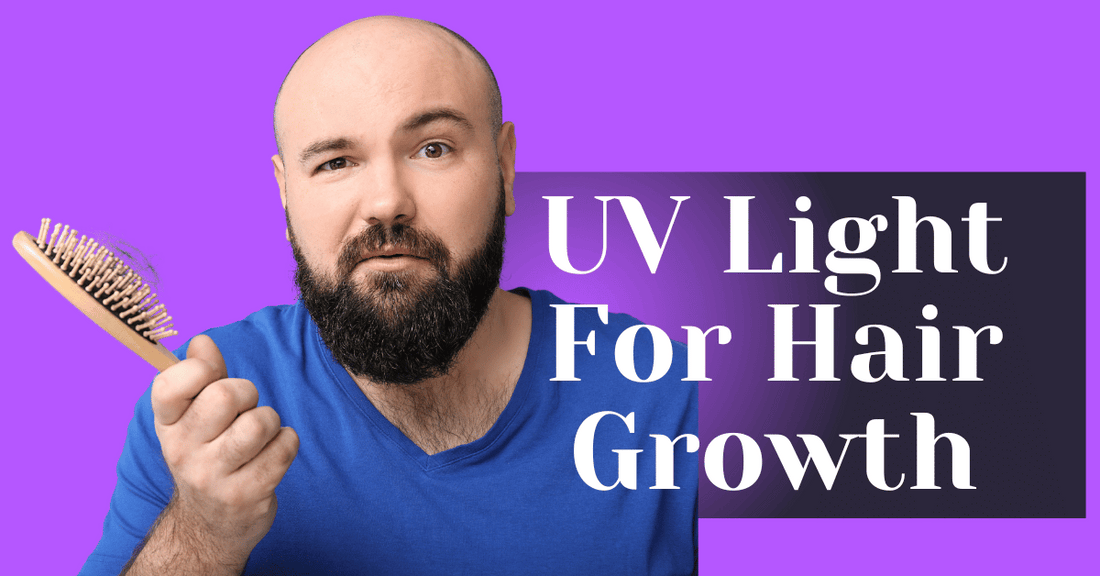
UV Light For Hair Growth
In the quest for solutions to hair loss and thinning, UV light therapy has emerged as a notable option, harnessing the power of ultraviolet light to potentially stimulate new hair growth and rejuvenate the scalp. While traditionally used for treating skin disorders, recent advancements have explored its benefits for hair regeneration. This guide provides an in-depth exploration of UV light for hair growth, detailing its mechanisms, benefits, risks, and how it compares to other hair growth therapies.
UV light therapy, which involves exposing the body, head and scalp to ultraviolet rays, is believed to activate follicle cells and enhance blood circulation, potentially leading to improved hair density and other health benefits. This article aims to furnish you with comprehensive information about UV light therapy, enabling you to make an informed decision if you're considering this treatment for hair growth.
Understanding UV Light

Ultraviolet (UV) light or radiation is a form of electromagnetic radiation with a wavelength shorter than that of visible light but longer than X-rays. It is categorized into three types of ultraviolet radiation based on the wavelength:
-
UVA (long-wave): With wavelengths from 320 to 400 nm, UVA is the most common type of UV light that reaches the earth's surface and is commonly used in tanning beds.
-
UVB (medium-wave): Ranging from 280 to 320 nm, UVB rays are the primary cause of skin reddening and sunburn and play a significant role in phototherapy treatments.
-
UVC (short-wave): The shortest wavelengths (100–280 nm) are mostly absorbed by the Earth's atmosphere and have potent germicidal properties, often used in sterilization.
In the medical, chemical and cosmetic fields, UV rays is widely used for various treatments, including skin disorders like psoriasis and vitiligo, and for disinfecting spaces and equipment. Its application in hair growth therapy is a relatively recent development that exploits Ultraviolet b capability to stimulate natural biological and chemical processes that can benefit the scalp and hair follicles.
UVb phototherapy in Dermatology and Hair Care:
-
Phototherapy: This therapeutic use of UVB light treats skin disorders and influences hair growth by stimulating cells in the skin and possibly the hair follicles.
-
Vitamin D Synthesis: UVB light aids in the production of Vitamin D, which is crucial for healthy skin and hair.
-
Anti-inflammatory Effects: UV light has been noted for its ability to reduce inflammation, a common issue in scalp conditions that can lead to hair loss.
By understanding these fundamental aspects of UV light, we can better grasp how light wavelengths and its targeted use in therapy might promote hair growth or improve scalp health.
The Science Behind UV Light and Hair Growth
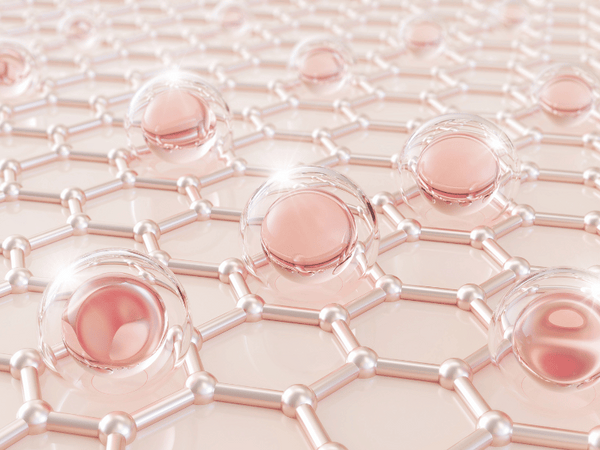
Understanding how UV light affects hair growth requires delving into the cellular level of hair follicles and the various skin cells surrounding them. Research suggests that controlled exposure to ultraviolet light at wavelengths of UVB light, in particular, can stimulate certain biological processes that may contribute to hair regeneration. Here, we'll explore the scientific basis for using UV light as a therapy for hair growth.
Mechanisms of UV Light on Hair Follicles
-
Cellular Activation: UV light exposure can activate cells in the skin, including those in the hair follicles. This activation helps to increase cell turnover and regeneration, potentially revitalizing dormant hair follicles.
-
Increased Blood Flow: UV light treatment may enhance blood flow to the scalp, providing more nutrients and oxygen to hair follicles, crucial for healthy hair growth.
-
Anti-inflammatory Properties: Inflammation can inhibit hair growth by affecting the hair cycle. UV light has anti-inflammatory effects that can stabilize the hair follicles' environment, promoting healthier growth cycles.
Scientific Studies and Evidence
Several studies have explored the effects of UV light on hair growth, with mixed results. While there is evidence supporting the notion that UV light can assist in conditions like alopecia areata by reducing inflammation and stimulating follicles, it is crucial to approach these findings with careful consideration due to variability in study designs various factors, and outcomes.
-
Case Study: A notable study involved a group of participants with alopecia areata, a condition characterized by significant hair loss. After undergoing UV radiation light therapy, participants showed notable improvements in hair regrowth, attributed to the immunomodulatory effects of UVB light.
-
Research Limitations: It's important to acknowledge that while some studies show positive results, the scientific community still needs more rigorous, large-scale studies to definitively confirm the benefits of UVb therapy light for hair growth across diverse populations.
Summary of Key Findings
-
Positive Indications: Some research indicates that UV light can be beneficial for hair growth, particularly in inflammatory scalp conditions.
-
Need for Further Research: Comprehensive studies are required to establish standardized protocols and confirm long-term safety and effectiveness.
This section underscores the importance of science in understanding the potential of UV light therapy in promoting hair growth. It emphasizes that while there are promising indicators, individuals should consult healthcare professionals and consider personal health conditions when considering this treatment.
Tables and Additional Elements:
Table: Summary of Key Studies on UV Light for Hair Growth
| Study | Population | Results | Notes |
|---|---|---|---|
| Study A | 30 participants with alopecia areata | Positive hair growth observed | Preliminary study, further research needed |
| Study B | 50 participants, general thinning | Mixed results | Highlights of the need for targeted therapy |
Benefits of UV Light for Hair Growth
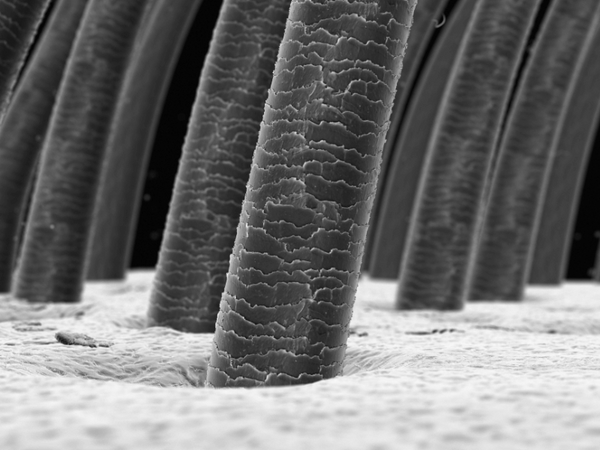
UV light therapy, particularly UVB, is gaining attention for its potential benefits in promoting hair growth. This therapy is not just about stimulating hair follicles; it involves a holistic approach to improving scalp health and hair quality. Below are the key benefits that UV light therapy may offer to individuals experiencing hair thinning or loss.
Key Benefits of UV Light for Hair Growth
-
Stimulation of Hair Follicles: UV light can help rejuvenate dormant hair follicles, potentially leading to new hair growth. The therapy is believed to activate the follicle cells, encouraging them to enter the anagen (growing) phase of the hair cycle.
-
Reduction of Scalp Inflammation: Many scalp conditions that inhibit hair growth are associated with inflammation. UV light has anti-inflammatory properties that may help reduce scalp inflammation, creating a healthier environment for hair growth.
-
Improvement in Scalp Health: By reducing harmful bacteria and treating scalp conditions like psoriasis or dermatitis, UV light therapy can improve overall scalp health. A healthy scalp is essential for the growth of strong and healthy hair.
-
Enhancement of Blood Circulation: Improved blood flow to the scalp ensures that hair follicles receive the necessary nutrients and oxygen. UV light therapy may help increase blood circulation, further supporting hair growth.
Real-Life Success Stories and Testimonials
Several individuals have reported positive results from using UV light therapy for hair growth. For instance, a patient with long-term alopecia areata noticed significant hair regrowth after a few months of regular UV light treatments. These testimonials underscore the potential of UV light therapy as a beneficial treatment for certain types of hair loss.
Visual Elements: Before and After Images
-
Before and After Photos: Showcasing real before and after images of individuals who have undergone UV light therapy can provide visual proof of its potential effects.
How UV Light Treatment for Hair Growth Works
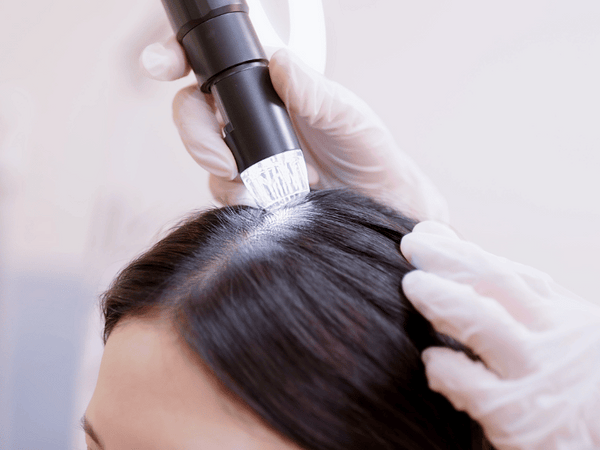
Understanding the process of UV light treatment for hair growth is crucial for anyone considering this therapy. This section breaks down the steps involved in a typical treatment session, discusses the types of devices used, and provides insight into the frequency and duration of treatments for optimal results.
Overview of the Treatment Process
1. Initial Consultation: Before starting UV light therapy, a dermatologist or hair treatment specialist will evaluate your hair loss condition, medical history, and suitability for UV treatment. This step ensures that UV light therapy is appropriate and safe for the individual.
2. Treatment Planning: Based on the initial consultation, a treatment plan is developed, specifying, for example, the type of UV light to be used (usually UVB), the duration of exposure to sunlight, and the frequency of sessions.
3. During the Session: During a treatment session, the affected area of the head, body or scalp is exposed to UV light under controlled conditions. This exposure is typically done using a handheld device or a hood-like structure that resembles a hair dryer head, which emits UV light.
4. Post-Treatment Care: After the session, patients may be advised on scalp care to minimize any potential side effects and enhance the treatment's effectiveness. This might include using specific shampoos or topical treatments.
Types of UV Light Devices
-
Clinical Devices: These are high-powered devices used in medical settings under the supervision of healthcare professionals. They offer precise control over the intensity and duration of UV exposure.
-
At-Home Devices: For those seeking a more convenient option, at-home UV light devices are available, though generally less powerful than clinical devices. These require careful adherence to instructions to avoid overexposure.
Treatment Frequency and Duration
-
Frequency: Treatment sessions typically occur 2-3 times per week. The exact frequency can vary based on the individual's response to the treatment and the severity of the hair loss.
-
Duration: Each session may last from a few seconds to several minutes, depending on the intensity of the light and the area being treated. A full treatment course might span several months to achieve the best results.
Expected Outcomes and Timelines
-
Short-Term Results: Some individuals may notice improvements within a few weeks, while for others, it may take longer to see visible hair growth.
-
Long-Term Maintenance: After the initial treatment course, maintenance sessions may be required to sustain hair growth results.
Visual Elements: Diagrams and Charts
-
Treatment Process Diagram: A step-by-step visual representation of the UV light treatment process.
-
Timeline Chart: A chart showing expected progress over time during UV light therapy.
Potential Risks and Side Effects
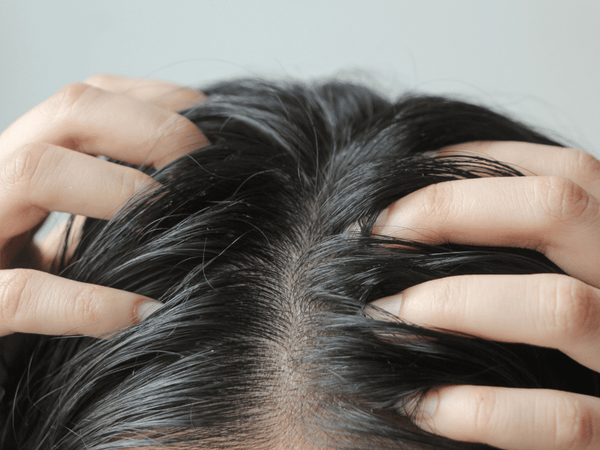
While UV light therapy offers promising benefits for hair growth, it's crucial to consider the potential risks and side effects associated with any ultraviolet radiation exposure. Understanding these risks can help individuals make informed decisions and take appropriate precautions when opting for this type of medical treatment.
Common Side Effects of UV Light Therapy
1. Skin Irritation and Redness: The most immediate and common side effect is skin irritation or redness, particularly right after the treatment sessions. This is generally mild and temporary.
2. Increased Risk of Sunburn: UV light, particularly UVB radiation, can increase the risk of sunburn if the exposure is too intense or too prolonged. It is vital to adhere strictly to the recommended sunlight exposure times and intensities.
3. Long-term Skin Damage: Repeated UV exposure can lead to long-term skin damage, including premature aging (like skin wrinkling and loss of elasticity) and an increased risk of skin cancers.
4. Eye Exposure Risks: If proper eye protection is not used during UV light therapy, there is a risk of damage to the eyes, such as cataracts or other serious eye conditions.
How to Mitigate These Risks
-
Professional Supervision: Always undergo UV light therapy under the guidance and supervision of a qualified healthcare professional who can adjust the treatment according to your skin's response.
-
Proper Protection: Use recommended protective gear, such as UV-blocking goggles, during treatment sessions to safeguard your eyes and surrounding skin.
-
Adherence to Protocols: Follow the treatment protocol precisely as prescribed, including the duration and frequency of UV light exposure. This ensures the effectiveness of the treatment while minimizing risks.
-
Regular Monitoring: Regular follow-ups with your healthcare provider are essential to monitor the effects of the treatment and make necessary adjustments.
Balancing Benefits and Risks
-
Informed Decision-Making: Before starting treatment, discuss the potential benefits and risks with your dermatologist or hair care specialist. Understanding both sides helps in making an informed decision that considers your health and safety.
-
Alternative Options: If the risks outweigh the benefits for you, consider discussing alternative treatments for hair growth that might be safer or better suited to your condition.
Visual Elements: Risk Management Chart
-
Risk Management Chart: A visual chart that outlines common risks associated with UV light therapy and steps to mitigate them, enhancing understanding and compliance.
Who Should Consider UV Light Hair Growth Therapy?
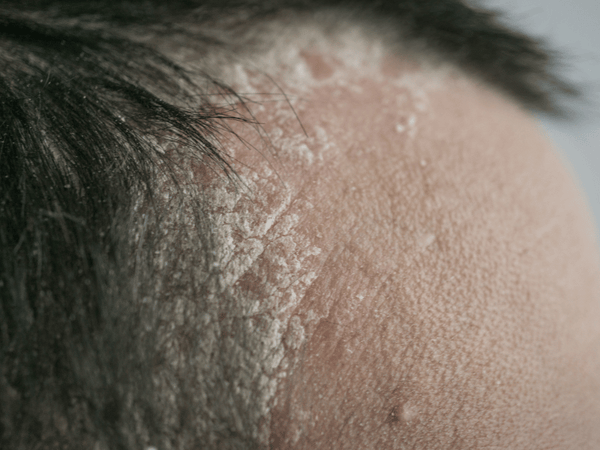
UV light therapy for hair growth is not suitable for everyone. It's essential to identify who might benefit most from this treatment and who should avoid it due to potential risks. This section will help guide individuals in determining whether UV light therapy is a viable option for their hair growth needs.
Ideal Candidates for UV Light Therapy
1. Individuals with Certain Scalp Conditions: People suffering from scalp conditions that contribute to hair loss, such as alopecia areata or psoriasis, for example, may benefit from UV light therapy. The anti-inflammatory properties of UV light can help manage these conditions and stimulate hair growth.
2. Those with Slow Hair Growth: Individuals who experience slow hair growth or thinning hair without significant bald patches might see improvement with UV light therapy, as it the ultraviolet light wavelengths can stimulate the hair follicles to enhance growth and thickness.
3. Patients Not Responding to Conventional Treatments: For those who have tried traditional hair growth methods (like topical treatments or oral medications) and have not seen satisfactory results, UV light therapy offers an alternative approach to hair damage.
Who Should Avoid UV Light Therapy?
1. Individuals with a History of Skin Cancer: Those with a history of skin cancer should avoid UV light therapy, as it involves prolonged exposure to to ultraviolet rays, which can potentially increase the risk of skin cancer.
2. People with Sensitive Skin: Individuals with very sensitive skin or conditions exacerbated by UV exposure (like lupus or xeroderma pigmentosum) should consult their healthcare provider before considering UV light therapy.
3. Pregnant or Nursing Women: Due to the lack of research on the effects of UV light therapy during pregnancy or nursing, it is advisable for pregnant or nursing women to avoid this treatment.
Factors to Consider Before Starting Therapy
-
Medical Consultation: Always consult with a dermatologist or a trichologist (a specialist in hair and scalp issues) to assess your suitability for UV light therapy and discuss any potential health risks.
-
Cost and Commitment: Consider the financial cost and the commitment required to complete the treatment regimen. UV light therapy typically requires multiple sessions over several months.
-
Alternative Treatments: Evaluate other less risky or more suitable treatments available that might also address your hair loss issues.
Comparing UV Light Therapy with Other Hair Growth Methods
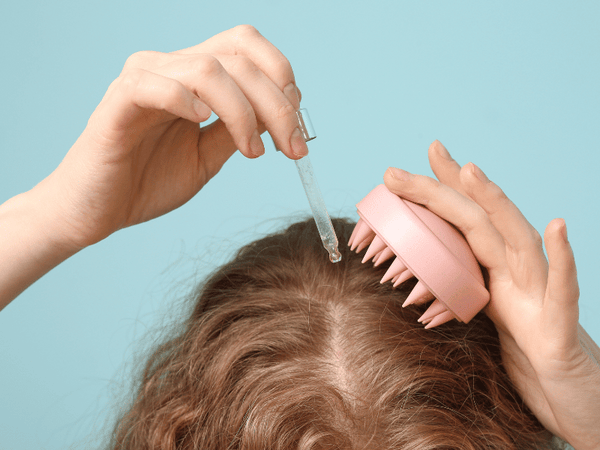
When considering treatment options for hair growth, it's essential to weigh the pros and cons of different approaches. This section compares UV light therapy with other common hair growth methods, highlighting their effectiveness, safety, and convenience to help individuals make informed decisions.
UV Light Therapy vs. Topical Treatments
-
Effectiveness: While both approaches can stimulate hair growth, UV light therapy targets the scalp directly, potentially offering more targeted and faster results compared to topical treatments that may take longer to show effects.
-
Safety: UV light therapy carries the risk of skin damage and other side effects, whereas topical treatments are generally considered safer and have fewer associated risks.
-
Convenience: Topical treatments can be applied at home, making them more convenient than UV light therapy, which often requires clinic visits and specialized equipment.
UV Light Therapy vs. Oral Medications
-
Effectiveness: Oral medications can provide systemic benefits for hair growth, but they may also come with more significant side effects compared to UV light therapy, which primarily targets the scalp.
-
Safety: UV light therapy is generally considered safe when administered correctly, whereas some oral medications for hair growth may have more serious side effects, requiring careful monitoring.
-
Convenience: Oral medications are taken orally, making them more convenient than UV light therapy, which requires dedicated treatment sessions.
UV Light Therapy vs. Hair Transplant Surgery
-
Effectiveness: Hair transplant surgery offers a permanent solution for hair loss, whereas UV light therapy may require ongoing sessions to maintain results.
-
Safety: Hair transplant surgery is a surgical procedure with associated risks, while UV light therapy is non-invasive, with fewer risks if conducted under proper supervision.
-
Cost: Hair transplant surgery is typically more expensive than UV light therapy, which may be a more affordable option for some individuals.
Red Light Therapy as an Alternative
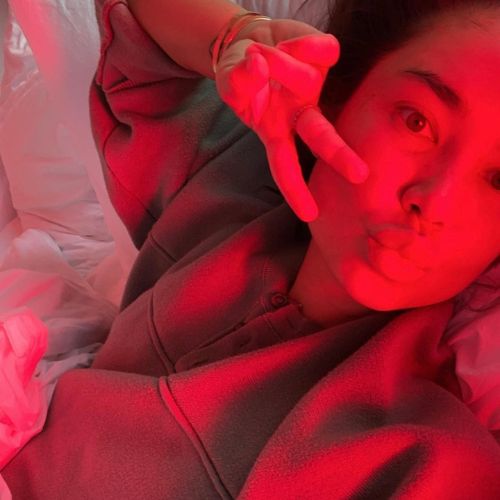
In recent years, red light therapy has emerged as a popular alternative treatment for hair growth, offering a non-invasive and potentially effective solution for individuals experiencing hair loss. Red light therapy, also known as low-level laser therapy (LLLT) or photobiomodulation, involves exposing skin cells on the body or scalp to low levels of red or near-infrared light, which are believed to stimulate cellular activity and promote hair regrowth.
How Red Light Therapy Works
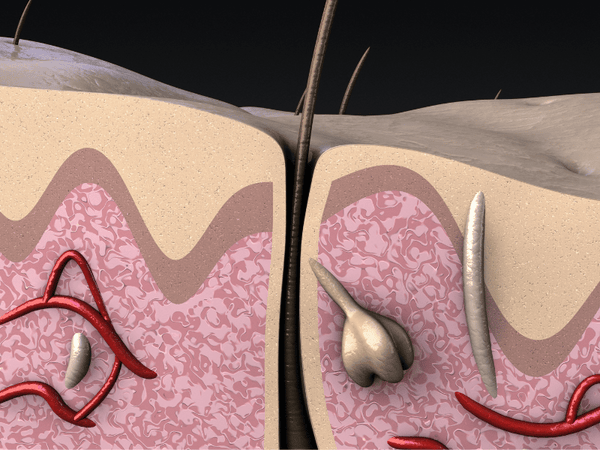
-
Stimulation of Hair Follicles: Red light therapy penetrates the scalp to reach the hair follicles, where it stimulates cellular energy production and enhances blood circulation. This process is thought to promote the growth of thicker, healthier hair.
-
Reduction of Inflammation: Red light therapy has anti-inflammatory effects, which can help reduce scalp inflammation and create a more favorable environment for hair growth.
-
Improvement of Scalp Health: By increasing blood flow and promoting the delivery of oxygen and nutrients to the scalp, red light therapy can improve overall scalp health and support the growth of strong, resilient hair.
Koze Health Redlight Devices
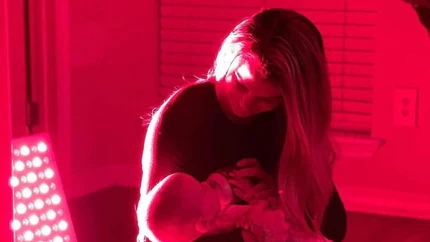
Koze Health offers a range of red light therapy devices specifically designed for hair growth and scalp health. These devices utilize medical-grade LEDs to deliver high dose, targeted red and near-infrared light to the scalp, providing a safe and effective treatment option for individuals seeking to improve their hair growth.
Benefits of Koze Health Redlight Devices
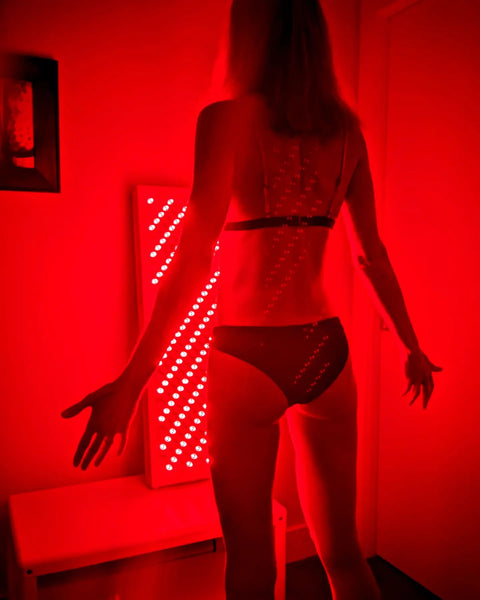
-
Clinically Proven: Koze Health red light therapy devices are backed by clinical research demonstrating their effectiveness in promoting hair growth and improving scalp health.
-
Convenient and Easy to Use: Koze Health devices are designed for at-home use, allowing individuals to undergo red light therapy treatments at their convenience without the need for clinic visits.
-
Safe and Non-Invasive: With no known side effects, Koze Health red light therapy devices offer a safe and non-invasive alternative to traditional hair growth treatments.
Summary and Conclusion
In conclusion, UV light therapy shows promise as a non-invasive treatment for promoting hair growth in individuals experiencing hair loss or thinning. By stimulating hair follicles, reducing inflammation, and improving scalp health, UV light therapy offers a holistic approach to addressing hair loss concerns. However, it's essential to weigh the benefits against the potential risks and consider other treatment options available.
Key Points to Remember
-
Benefits of UV Light Therapy: Stimulates hair follicles, reduces scalp inflammation, improves scalp health, and enhances blood circulation to the scalp.
-
Potential Risks and Side Effects: Skin irritation, increased risk of sunburn, long-term skin damage, and eye exposure risks if not used correctly.
-
Ideal Candidates: Those with certain scalp conditions, slow hair growth, and those not responding to conventional treatments may benefit from UV light therapy.
-
Who Should Avoid UV Light Therapy: Individuals with a history of skin cancer, sensitive skin, or those who are pregnant or nursing should avoid UV light therapy.
-
Comparing with Other Hair Growth Methods: UV light therapy offers targeted scalp treatment compared to topical treatments, is safer than some oral medications, and is less invasive than hair transplant surgery.
Frequently Asked Questions (FAQs) About UV Light Therapy for Hair Growth
1. Is UV-light therapy safe for hair growth?
When administered by a qualified healthcare professional, UV light therapy is generally considered safe for stimulating hair growth. However, it's essential to follow the recommended guidelines to minimize the risk of side effects.
2. How long does it take to see results from UV light therapy?
The timeline for seeing results can vary depending on the individual's hair growth cycle and the severity of the hair loss. Some individuals may notice improvement within a few weeks, while others may require several months of treatment.
3. Are there any side effects of UV light therapy for human hair and growth?
Common side effects of UV light therapy include skin irritation, redness, and an increased risk of sunburn. Long-term use of ultraviolet radiation, may also lead to skin damage and an increased risk of skin cancer if not used properly.
4. Can I do UV light therapy at home?
While there are at-home UV light therapy devices available, it's essential to use them under the guidance of a healthcare professional to ensure safety and effectiveness.
5. How often do I need to undergo UV light therapy sessions?
The frequency of UV light therapy sessions can vary depending on the individual's response to treatment and the severity of the hair loss. Typically, sessions are done 2-3 times per week.
6. Can UV light therapy be combined with other hair growth treatments?
UV light therapy can be combined with other hair growth treatments, such as topical medications or oral supplements, to enhance results. However, it's essential to consult with a healthcare professional before combining treatments.
7. Are there any long-term effects of UV light therapy on human hair and hair color and growth?
Long-term use of UV light therapy may lead to skin damage and an increased risk of skin cancer if not used properly. It's essential to follow the recommended guidelines and undergo regular skin checks to monitor for any potential issues.
8. How does UV light therapy compare to other hair growth treatments?
UV light therapy offers a non-invasive approach to stimulating hair growth compared to other treatments, such as topical medications or hair transplant surgery. It may be a suitable option for individuals seeking alternative treatments for hair loss.
9. Is UV light therapy a suitable medical treatment for all types of hair loss?
UV light therapy may be more effective for certain types of hair loss, such as alopecia areata or scalp conditions that contribute to hair loss. It's essential to consult with a healthcare professional to determine if UV light therapy is the right option for your specific condition.
10. How can I find a healthcare professional who offers UV light therapy for hair growth?
You can start by consulting with a dermatologist or trichology's, who can assess your hair loss condition and recommend appropriate treatment options, including UV light therapy.